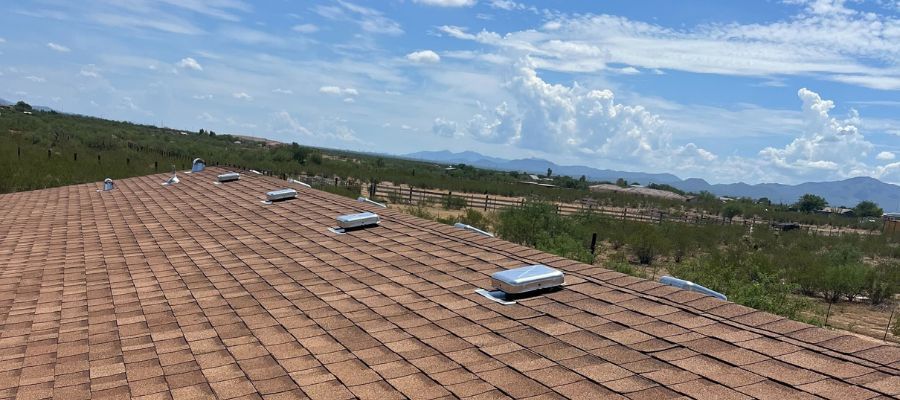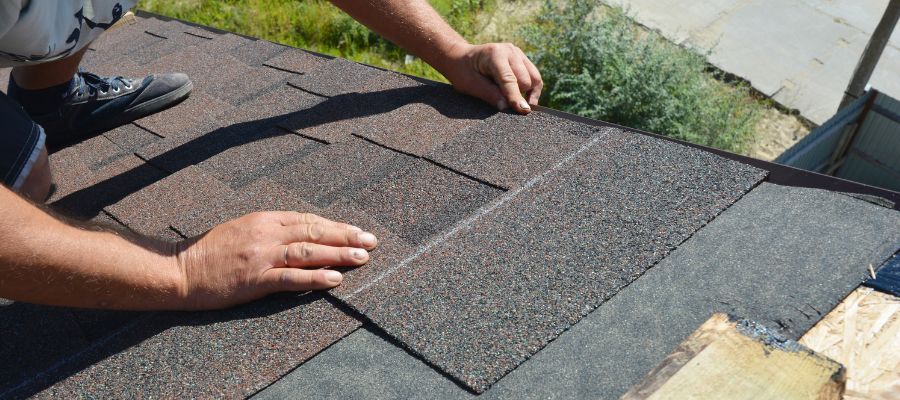The Importance of Roof Ventilation in Tucson’s Heat

Tucson is known for its scorching summer temperatures, often exceeding 100°F. While most homeowners are focused on keeping their interiors cool, they may overlook an essential aspect of maintaining a comfortable and energy-efficient home: proper roof ventilation. Ensuring that your roof is adequately ventilated is crucial not only for extending the life of your roof but also for improving the overall energy efficiency of your home. In this blog, we’ll explore why roof ventilation is so important in Tucson’s hot climate and how it can benefit your home.
Why Roof Ventilation Matters
Roof ventilation is a system that allows air to circulate through the attic or roof space. This circulation is vital for controlling temperature and moisture levels within your home. Without proper ventilation, hot air can become trapped in your attic, leading to several problems that can affect both your roof and your home’s interior.
Prolonging Roof Lifespan
Heat Damage: During Tucson’s hot summer months, the temperature in an unventilated attic can reach up to 160°F. This intense heat can cause shingles to deteriorate prematurely, reducing the overall lifespan of your roof. Proper ventilation allows hot air to escape, lowering the attic temperature and preventing heat-related damage to your roofing materials.
Moisture Control: Even in a dry climate like Tucson, moisture can accumulate in your attic from everyday activities like cooking, showering, and laundry. Without proper ventilation, this moisture can get trapped, leading to mold growth, wood rot, and damage to the insulation. Ventilation helps regulate moisture levels, protecting your roof structure and extending its life.
Improving Energy Efficiency
Reducing Cooling Costs: When hot air is trapped in the attic, it can cause your home’s interior temperature to rise, making your air conditioning work harder to keep your living spaces cool. Proper roof ventilation reduces the amount of heat that seeps into your home, lowering your cooling costs and increasing energy efficiency.
Balanced Indoor Temperatures: Proper ventilation creates a more stable indoor temperature by preventing hot air from accumulating in your attic. This not only reduces the strain on your HVAC system but also contributes to a more comfortable living environment, even during Tucson’s hottest days.
Preventing Ice Dams in Winter
While ice dams are more common in colder climates, they can still occur in Tucson’s mountainous areas. Poor ventilation can cause uneven roof temperatures, leading to snow melt and refreeze at the roof’s edge. Proper ventilation helps maintain a uniform temperature across the roof, preventing the formation of ice dams and the damage they can cause.
Protecting Your Home’s Interior
Insulation Efficiency: When your attic is well-ventilated, the insulation works more effectively. Proper ventilation prevents heat and moisture from compromising the insulation, which is essential for maintaining energy efficiency and keeping your home comfortable.
Reducing Indoor Moisture: Excess moisture in the attic can seep into your living spaces, leading to high humidity levels, musty odors, and even mold growth. By keeping your attic dry, roof ventilation helps protect your home’s interior from moisture-related issues.
How to Ensure Proper Roof Ventilation
Achieving proper roof ventilation involves a combination of intake and exhaust vents that work together to allow air to flow freely through the attic. Here are some key components:
Soffit Vents: Located under the eaves of your roof, soffit vents allow cooler air to enter the attic.
Ridge Vents: Installed along the peak of the roof, ridge vents provide an outlet for hot air to escape.
Gable Vents: Placed in the gable ends of the roof, these vents help promote air circulation.
Attic Fans: These powered fans can enhance ventilation by actively pulling air out of the attic.
A roofing professional can assess your home’s specific needs and recommend the best ventilation system to ensure your roof and home are protected from Tucson’s extreme heat.
Frequently Asked Questions About Roof Ventilation
How do I know if my roof is properly ventilated?
Look for signs such as unusually high attic temperatures, uneven roof wear, or a musty smell in your attic. A professional roofing inspection can also determine if your ventilation system is adequate.
Can I add roof ventilation to an existing roof?
Yes, additional ventilation can be installed on an existing roof. A roofing professional can recommend the best types of vents for your home and climate.
Will adding roof ventilation lower my energy bills?
Proper ventilation can significantly reduce your cooling costs by preventing heat buildup in your attic, which reduces the strain on your HVAC system.
Is roof ventilation necessary in a dry climate like Tucson?
Absolutely. Even in dry climates, heat buildup in the attic can damage your roof and increase energy costs. Ventilation helps manage temperature and moisture levels year-round.
How often should I have my roof ventilation checked?
It’s a good idea to have your roof ventilation inspected annually, especially before the summer heat sets in, to ensure it’s functioning correctly.
Proper roof ventilation is essential for maintaining the longevity of your roof and the energy efficiency of your home, especially in Tucson’s hot climate. If you’re unsure about your current roof ventilation, contact Repair First Roofing for a professional assessment and recommendations to keep your home cool and your roof in top condition.
You May Also Like






